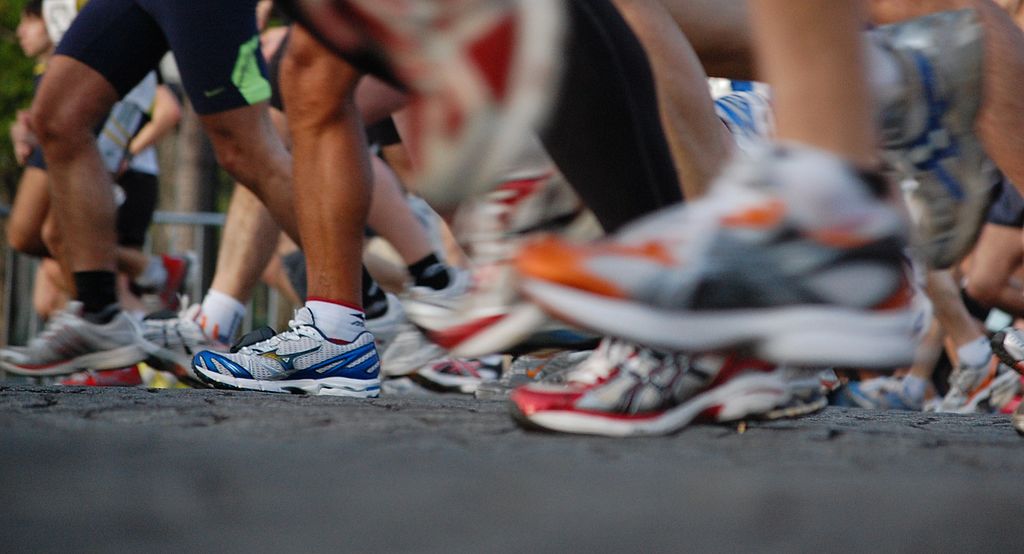 World Arthritis Day takes place this year on Thursday, October 12th and Newcastle Sports Injury Clinic will be marking the event with a number of blogs that look at arthritis, the different forms the condition can take, as well as the importance of exercise and physiotherapy as part of living with arthritis.
World Arthritis Day takes place this year on Thursday, October 12th and Newcastle Sports Injury Clinic will be marking the event with a number of blogs that look at arthritis, the different forms the condition can take, as well as the importance of exercise and physiotherapy as part of living with arthritis.
If you believe you may have arthritis, but have not yet had it diagnosed, we always recommend that you speak to your GP first. If you are suffering from arthritis, it need not mean a loss of quality of life. Speak to one of our specialist physiotherapists today on 0191 233 0500 to find out if we can help.
Below, we outline the most common forms of arthritis. This is part one of a three-part blog to mark World Arthritis Day 2017. You can read part two here.
Osteoarthritis
We walk hundreds of steps a day; millions in our life time, and all this takes a toll on our feet. Osteoarthritis is often referred to as ‘wear and tear’ of the joints, which means that it usually affects those joints which carry the bulk of our body weight and where more force is acting through them. For this reason, osteoarthritis is common in the big toe joint and can cause it to become stiff and painful. This can then develop into a bunion which may make moving through the gait cycle tricky and lead to further complications.
Osteoarthritis can also be found in the arch of the foot, causing it to drop. This can be painful and may affect stability if the correct shoes are not worn. Likewise, if the ankle is affected by osteoarthritis then it will become stiff and unable to function normally. If this is the case, physiotherapy and podiatry can help mobilise the joint.
Rheumatoid Arthritis
Rheumatoid arthritis is an autoimmune disorder which cause inflammation to the joints. Usually the symptoms affect both sides of the body equally, whereas osteoarthritis tends to be unilateral. The inflammation causes the joint to swell and become hot, red, and painful which occurs in a pattern of flare-ups known as relapse and remission.
In the period of relapse, the symptoms include:
- morning joint stiffness which usually wears off under 30 minutes
- swelling and pain
- fatigue and general malaise
- depression
- anaemia
- weight loss
When the inflammation goes down, the joint capsule remains stretched which can cause joint instability even in remission.
Psoriatic Arthritis
This is a type of arthritis which affects people already diagnosed with psoriasis. It causes inflammation around the joints and causes them to become swollen and painful. Like with rheumatoid arthritis, psoriatic arthritis presents in a relapse and remitting pattern.
Symptoms of psoriatic arthritis include:
- Inflammation of the skin (psoriasis)
- Inflammation of the joints
- Toe and finger swelling
- Pitting of the nails
Gout
This is caused through the formation of sodium urate crystal in the joint. It can be very painful and usually occurs in the big toe joint but is also common in the thumbs, elbows, wrists, and knees. Whilst drinking and eating to excess is often implicated as the cause of gout, this is rarely the whole picture. Gout builds up over time and is caused by the inability of the kidney to sufficiently rid the body of uric acid. Often the crystal deposits can exist in the joints for years before developing into gout.
Symptoms of gout include:
- Skin over the joint is shiny and often peels
- Painful, even on light touch
- Swollen, red and hot
Ankylosing Spondylitis
This is an inflammatory condition where the body deposits calcium to the ligaments which attach to the bones of the vertebrae causing new bone to grow on the spine. This can make it hard to bend down to reach the feet so the patient is unable to provide adequate footcare. It is important that a podiatrist assesses the feet to make sure that they are properly being cared for.
Ankylosing Spondylitis also affects mobility, therefore treatment with a physiotherapist is essential.
Symptoms of Ankylosing Spondylitis include:
- Stiffness in the morning which lasts longer than 30 minutes, but which eases throughout the day
- Pain in the lower back, buttocks or thighs

